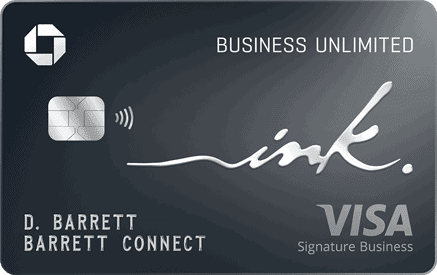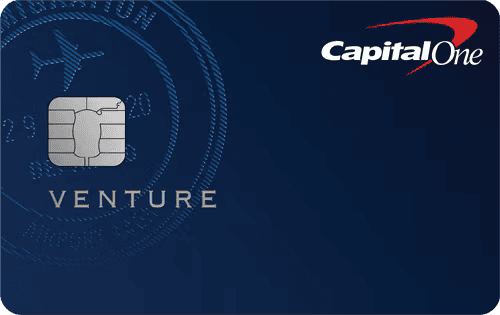
10xTravel is part of an affiliate sales network and receives compensation for sending traffic to partner sites, such as CreditCards.com. This compensation may impact how and where links appear on this site. This site does not include all financial companies or all available financial offers. Terms apply to American Express benefits and offers. Enrollment may be required for select American Express benefits and offers. Visit americanexpress.com to learn more. All values of Membership Rewards are assigned based on the assumption, experience and opinions of the 10xTravel team and represent an estimate and not an actual value of points. Estimated value is not a fixed value and may not be the typical value enjoyed by card members.
Note: Some of the offers mentioned below may have changed or may no longer be available. The content on this page is accurate as of the posting date; however, some of our partner offers may have expired. You can view current offers here.
All information about Chase Freedom Flex® has been collected independently by 10x Travel. Chase Freedom Flex® is no longer available through 10xtravel.com.
In the era where the convenience of online shopping has become a daily necessity, Amazon stands as the undisputed giant in the e-commerce realm. As millions of consumers turn to this online marketplace for their shopping needs, the partnership between Amazon and Chase has given rise to a credit card that aims to reward shoppers and enhance the experience: the Prime Visa.
This card often gets significant attention for its unique blend of perks and rewards. In this Prime Visa credit card review, we’ll explore the key features and benefits that make it stand out in the crowded credit card landscape. Conversely, we’ll also acknowledge any potential drawbacks that users should be mindful of, as this card may not be a worthy addition to every wallet.
What Is the Prime Visa?
The Prime Visa credit card is the result of a unique partnership between Amazon and Chase sought to offer Amazon customers a credit card that seamlessly integrates into their shopping experience while also maximizing potential rewards.
The Prime Visa cardholders enjoy competitive perks centered around cash back. As you might expect, shopping at Amazon and brands like Whole Foods will offer the highest cashback rates, but the card also offers decent returns in popular spending categories like groceries, dining and travel. Ultimately, the Prime Visa card caters toward Amazon loyalists, but even occasional shoppers can find great value in the benefits.
Key Features and Benefits
Credit cards today vie for our attention with an array of impressive features and perks. The Prime Visa card is no different, but it distinguishes itself as a powerhouse tailored for Amazon shoppers. This is due to key features and benefits like the rewards program, welcome bonus and other additional travel benefits and perks.
Rewards Program (Cash Back)
The biggest standout feature of the Amazon Prime Visa card is the generous cashback rewards system. Cardholders who are also Amazon Prime subscribers earn an impressive 5% back at Amazon.com, Amazon Fresh and Whole Foods Market. This benefit makes the card especially enticing for those who routinely rely on Amazon for everything from electronics to household essentials.
The card also earns 5% back on Chase Travel purchases made through the Ultimate Rewards portal (with an Amazon Prime account). This makes the card a good option for those who don’t want to apply for higher annual fee travel cards, yet still get a good return on travel spending. Keep in mind that you’ll earn 3% back in the aforementioned spending categories if you’re not a Prime member.
The cashback benefits extend beyond the virtual marketplace. Cardholders can also enjoy 2% cash back at gas stations, restaurants, rideshare and local transit. All other transactions earn 1% back.
Sometimes, Amazon will offer elevated cashback rates on certain categories. For example, during the holiday shopping rush, Amazon offered cardholders 6% back for select purchases if you chose Prime Day Shipping (i.e. no rush delivery). Also, Amazon offers a rotating selection of items and categories that can qualify for up to 10% back in savings. Be sure to check for offers often.
All cash back earned comes in the form of Amazon credits that you can use toward future Amazon purchases. For instance, an Amazon order of $100 would earn you 5% back, or $5 in credits for your Amazon account. You cannot transfer these credits to your Chase bank account. Thus, the rewards are useful only if you shop on Amazon at least occasionally.
Welcome Bonus
The Prime Visa from Amazon doesn’t have an official welcome bonus. However, it does often come with an offer that varies depending on where you see it.
If you apply via the official Amazon Prime Visa page, you’ll instantly receive an Amazon gift card upon approval with no spending threshold required. The value of the gift card can vary, but it’s usually worth around $100.
Amazon is also known to market their card while you shop on their website, especially right before checkout. You’ll sometimes see an offer to have a discount on your order upon approval for the card. The value of the discount may or may not be worth more than the $100 Amazon gift card offer.
You may also receive a personal offer for the card via mail or apply for the card in-branch. In either case, the welcome offer can vary.

Prime Membership Requirement for Elevated Rewards
You might have noticed that the Prime Visa card doesn’t have an annual fee. However, for you to be earning 5% cash back at Amazon, Whole Foods and Chase Travel, you need to be an Amazon Prime member.
The cost of a Prime subscription is $139 per year pre-tax (or $14.99 per month pre-tax, if paying monthly). However, it isn’t quite accurate to say that $139 is the annual fee of the card, because you’re also getting a host of other benefits associated with Prime for that price.
Indeed, the synergy of the Prime Visa card works well with everything else you get with your Prime membership: complimentary access to a vast library of streaming content with Prime Video, exclusive deals on Amazon and faster shipping options. These are all vital benefits for those who frequently use products in the Amazon ecosystem.
In fact, if you’re paying for Prime already, it’s fair to say that the annual fee for the card is effectively $0, since you’re not paying anything extra for it. That’s a great deal in exchange for the card’s strong cashback categories and additional perks.
However, non-Prime members aren’t out of luck. With this card, you’ll still earn 3% back at Amazon, which is lower compared to the 5% back for Prime members. If you’re not in need of all the bells and whistles associated with a Prime membership but still shop with Amazon semi-regularly, you can still earn decent rewards with the Prime Visa.

Additional Perks
Here are a few additional perks you get with the Prime Visa card:
- No foreign transaction fees.
- Auto rental collision damage waiver. This card provides secondary coverage to supplement your personal auto policy.
- Purchase protection. New purchases are covered for 120 days against damage or theft for up to $500 per claim.
- Extended warranty protection. New purchases get an additional year of extended warranty, on eligible warranties of three years or less.
- Baggage delay insurance. You get reimbursed for essential purchases resulting from baggage delays of six hours or more, up to $100 a day for three days.
- Lost luggage reimbursement. If your luggage is damaged or lost by the carrier, you get coverage for up to $3,000 per passenger.
For a $0 annual fee non-travel card, this is a decent set of additional travel perks.

Potential Drawbacks
While the Prime Visa boasts a lot of amazing features, it’s crucial to understand the potential drawbacks as well. This can help you make a more informed decision on whether this card aligns with your current financial habits and preferences.
High APR
The Prime Visa comes with a relatively high Annual Percentage Rate (APR). It’s essential for users to understand the implications of carrying a balance from month to month. A high variable APR can lead to increased interest charges if you don’t keep your balance in check. We always recommend paying your card off on time and in full every month so that interest never enters the picture.
Limited Rewards Use Outside of Amazon
Despite the rich rewards structure within the Amazon ecosystem, the Prime Visa card doesn’t carry many benefits outside the platform. This can be a drawback for those who seek flexibility in redeeming rewards across various merchants or those who prefer a more versatile rewards program.
Non-Prime Members Get Fewer Rewards
To get the most out of the Prime Visa, you probably should be an Amazon Prime member. Prime members earn 5% cash back at Amazon, while non-Prime members earn 3% back. This is something to keep in mind if you think you might cancel your Amazon Prime membership in the future.
How Does the Amazon Prime Card Compare to Other Credit Cards?
The Amazon Prime Visa card is a cashback card that works best with one particular retailer—Amazon. Other similar cards by Chase include the DoorDash Rewards Mastercard®, the Instacart Mastercard®, the Disney® Visa® Card and the Disney® Premier Visa® Card. Out of these store-specific cards, the Prime Visa easily comes out on top due to the high cashback rate and variety of items you can order from Amazon.
Below is a quick comparison of these cards.
| Card | Annual Fee | Highest Earning Category | Other Benefits |
|---|---|---|---|
| Prime Visa | $0 | 5% back at Amazon, Amazon Fresh, Whole Foods Market and Chase Travel | Various purchase and travel protections, no foreign transaction fees |
| DoorDash Rewards Mastercard® | $0 | 4% back on DoorDash and Caviar orders | Free DashPass for a year, complimentary DashPass with $10,000 annual spend |
| Instacart Mastercard® | $0 | 5% back on Instacart and Chase Travel | Free year of Instacart+ and $100 Instacart credit |
| Disney® Premier Visa® Card | $49 | 5% back in Disney Rewards Dollars at DisneyPlus.com, Hulu.com and ESPN.com | $300 statement credit after $1,000 of spend in first three months; select 10% off at DisneyPlus.com |
| Disney® Visa® Card | $0 | 1% back in Disney Rewards Dollars on all purchases | $150 statement credit after $500 of spend in first three months |
What about the other popular $0 annual fee cards in the Chase portfolio, such as the Chase Freedom Flex® and the Chase Freedom Unlimited®? The Freedom Flex card offers rotating 5% categories, and the Freedom Unlimited card earns a baseline of 1.5% back on most purchases.
The key here is still the Prime Visa’s 5% back at Amazon. Apart from the occasional quarter where the Freedom Flex also offers 5% back at Amazon, the Prime Visa offers the best earning rate out of all other cards in the market.

Who Should Consider the Prime Visa?
Credit cards are not a one-size-fits-all commodity. Their utility depends on individual spending habits and priorities. The Prime Visa card is no exception and is better suited for specific user profiles.
Regular Amazon and Whole Foods Shoppers
For those who frequently shop at Amazon and Whole Foods, the Prime Visa card is sure to help you rack up some significant rewards. The 5% cashback rate is unmatched, meaning you’ll rack up Amazon credits faster than any other card on the market.
Prime Members
If you’re already a Prime member, it’s strongly worth considering this card for the 5% cash back rate, especially since there’s no annual fee.
The only reason you might steer away from this card is if you’re up against Chase’s 5/24 rule. It may be better to not waste a 5/24 slot on this card if there are other Chase credit cards you’re hoping to get approval for in the near future.
Who Might Reconsider?
As we discussed in the drawbacks section, infrequent Amazon shoppers will find limited utility in this card. It can be harder to make use of the cashback rewards you earn.
Depending on your spending habits, you might find better utility in other rewards cards. For instance, you might consider the Chase Freedom Unlimited as a better catch-all card for 3% cash back at restaurants and drugstores and 1.5% cash back on all other purchases, compared to the Prime Visa’s 1% back in non-bonus categories. In addition, the Freedom Unlimited card earns cash back in the form of Chase Ultimate Rewards points, which are much more versatile.
Is the Prime Visa Worth It?
Designed for the avid Amazon and Whole Foods shopper, the Prime Visa card from Chase offers a host of benefits, including a generous cashback rewards system, Amazon gift card welcome offer and even certain travel benefits.
For regular Amazon and Whole Foods patrons the Prime Visa card is definitely worth it. You’re essentially getting 5% off on all your Amazon purchases as long as you’re a Prime member.
However, the card isn’t the optimal choice for everyone. Those that seek more versatile rewards programs or those uninterested in committing to Amazon Prime should look elsewhere for cards that better suit their spending preferences. In addition, although we always recommend paying your card off in full every month, the high APR can give prospective cardholders pause if they anticipate carrying a balance month to month.
From Reviews to Real Savings with 10xTravel
If you’re a Prime member, there’s a lot of cash back potentially waiting for you. As we covered in this Chase Amazon Prime credit card review, you could get significant savings off your Amazon and Whole Foods purchases now by applying for the Prime Visa card. Approval decisions are generally made instantly after applying, so you could start earning 5% back as soon as your next order.
New to the world of points and miles? The Chase Sapphire Preferred® Card is the best card to start with.
With a bonus of 75,000 bonus points after you spend $5,000 on purchases in the first 3 months from account opening. , 5x points on travel booked through the Chase Travel Portal and 3x points on restaurants, streaming services, and online groceries (excluding Target, Walmart, and wholesale clubs), this card truly cannot be beat for getting started!
Editors Note: Opinions expressed here are author’s alone, not those of any bank, credit card issuer, hotel, airline, or other entity. This content has not been reviewed, approved or otherwise endorsed by any of the entities included within the post.









